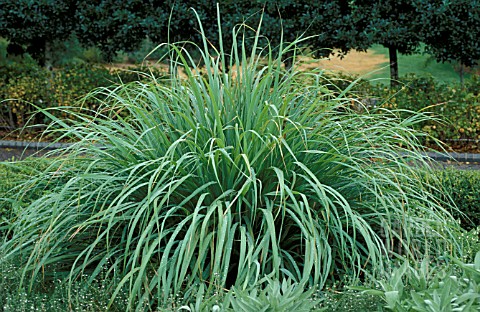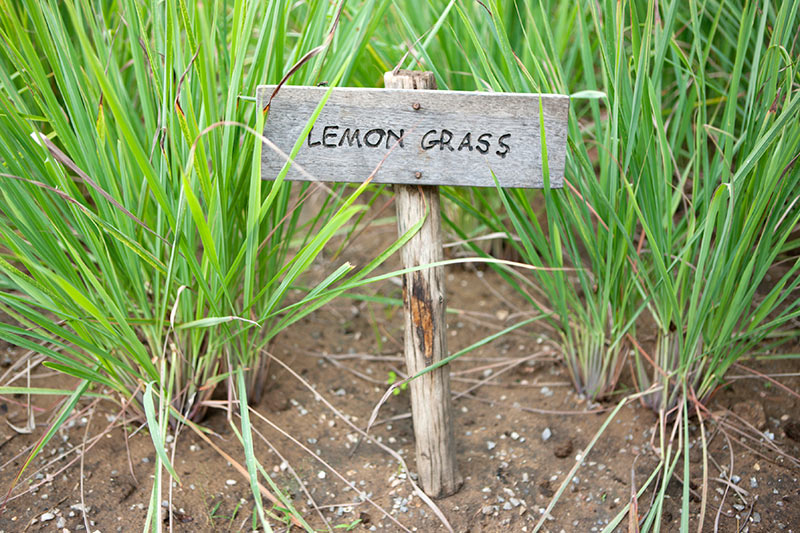Cymbopogon citratus (DC.) Stapf.
| Botanical Name | Cymbopogon citratus (DC.) Stapf. |
| Order: | Poales |
| Family: | Poaceae |
| Genus: | Cymbopogon |
| Species: | C. citratus |
| Common Names: | Fever herb; Citronnelles (F). Lemon grass, French; citronelle, verveine des'indes |
Plant Synonyms
Andropogon citratusC
Plant Local Names
Burkina Faso: Dioula - Bin boulou;citroneli, Fulfulde- Wuluunde
Gambia: Manding mandinka - Kanyang yallo
Ghana: Fante - Ti-Ahaban, Ga-adangbe - Ti-Ba, Ewe - tighe.
Guinea: Konyagi - l-Del Tsgag, Guinea-Bissau: Crioulo - Belgata,
Mali: Bambara- Bin boulou, Senoufo-cafi- gna
Nigeria: Ibibio - Myoyaka Makara, Igbo (Owerri) - Achara ehi, Yoruba - Kooko oba.
Sierra Leone: Bulom(Kim) - Pei-poto, Kono -Pu-lumbi, Mendu - Pu-lumbe.
Senegal: Bambara - ce kala
Togo: Ewe- Tsigbe, Ouatchi- Gbehoin, Mina - Fifaglass
Plant Habitat
Native to tropical Asia and cultivated in homes as medicinal herb; grown as an ornamental and horticultural plant in compounds, along roadsides and also embankments and on hillsides to check erosion.
Plant Material of Interest
Fresh or dried leave, Flower
Plant Description
It is a stout, aromatic, coarsely perennial herb, 2 m high or more, rarely flowering, robust with odoriferous, aromatic light green leaves standing on adventitious roots; lower glumes of sessile spikelet, narrowly lanceolate, almost flat to deeply concave, with the bottom of the depression rounded and wingless at the apex. Leaf-blades are linear to filiform, narrowing at the base; leaves are fragrant, taping at the ends; 70 cm long and 5-15 mm broad, margins are scabrous and prominent midrib underneath; inflorescence is in panicles (Burkill, 1985).
Plant Used Parts
Plant Uses
C. citratus is Used as an antimalarial, diuretic, stomachic tonjc, febrifuge emmenagogue, antiseptic; anxiolytic, hypnotic; anticonvulsant, hypotensive, antjcatarrhal and antiheumatic in African Traditional Medicine (African Pharmacopoiea,*1985; Burkill, 1985; Kerharo and Adam, 1974; Oliver, 1959). It is indicated for cough, lumbago, sprains, ringworm, athlete's foot; malaria, fever, jaundice, throat and chest infections, moderate-to-severe pain, hypertension, diabetes mellitus, obesity, nervous and gastrointestinal disturbances (Adeneye and Agbaje, 2007); Blanco et al., 2007; Tchoumbougnang et al., 2005; Onabanjo et al., 1993; Gill, 1992; Carlini et al., 1986).
Plant Therapeutic Action
Analgesic; antiasthmatic (prophylactic); anticatarrhal; .antidiarrhoeal; antibacterial, antidiabetic; .antifungal; antirheumatic; carminative; diuretic; febrifuge; vasodilatory, antinociceptive, sedative, anxiolytic; insect repellant (lemon; grass oil); sudorific (Dokosi, 1998; Ayittey-Smith, 1989).
Plant Precaution for Use
Plant Adverse Effect
Plant Contraindication
Plant Dosage Forms
Plant Dosage
Plant Storage
Plant Chromatographic Fingerprint
Plant Constituents
Volatile oil constituents (e.g. cymbopogone, cymbopogonol, citral, geraniol, citronellal, camphene and related monoterpenes, triterpenes and sesquiterpenes); alkaloids, saponins, flavonoids, tannins and simple sugars (Onabanjo et al., 1993; GHP, 1992; Hanson et al., 1976).

